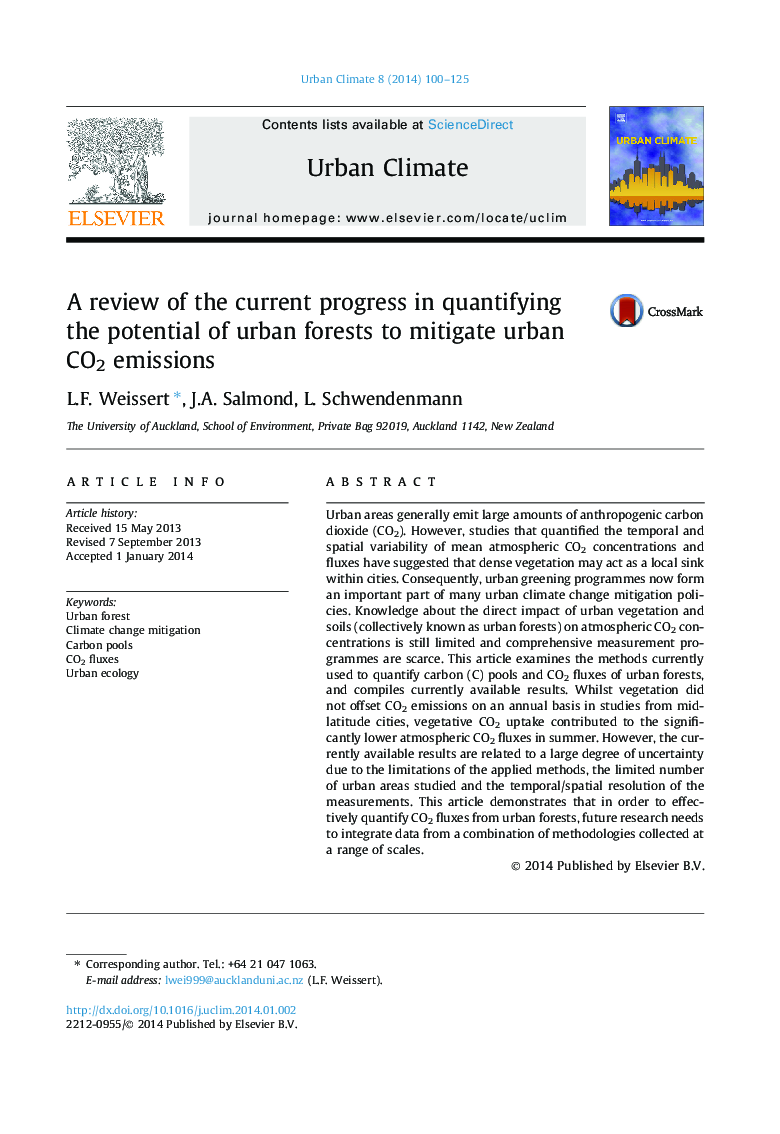| Article ID | Journal | Published Year | Pages | File Type |
|---|---|---|---|---|
| 143737 | Urban Climate | 2014 | 26 Pages |
Urban areas generally emit large amounts of anthropogenic carbon dioxide (CO2). However, studies that quantified the temporal and spatial variability of mean atmospheric CO2 concentrations and fluxes have suggested that dense vegetation may act as a local sink within cities. Consequently, urban greening programmes now form an important part of many urban climate change mitigation policies. Knowledge about the direct impact of urban vegetation and soils (collectively known as urban forests) on atmospheric CO2 concentrations is still limited and comprehensive measurement programmes are scarce. This article examines the methods currently used to quantify carbon (C) pools and CO2 fluxes of urban forests, and compiles currently available results. Whilst vegetation did not offset CO2 emissions on an annual basis in studies from mid-latitude cities, vegetative CO2 uptake contributed to the significantly lower atmospheric CO2 fluxes in summer. However, the currently available results are related to a large degree of uncertainty due to the limitations of the applied methods, the limited number of urban areas studied and the temporal/spatial resolution of the measurements. This article demonstrates that in order to effectively quantify CO2 fluxes from urban forests, future research needs to integrate data from a combination of methodologies collected at a range of scales.
